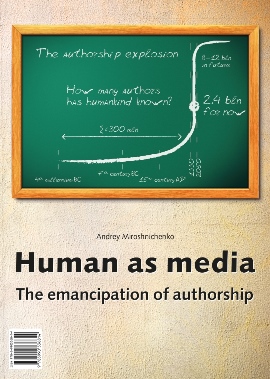Both horses and ships gave their masters opportunistic (“tip-and-run”) superiority over sedentary cultures. A chapter from Digital Future in the Rearview Mirror: Jaspers’ Axial Age and Logan’s Alphabet Effect.
(Previously in the chapter: The pirates of the Aegean and the opportunistic mentality)
…Interestingly, the versatility of the pirates parallels the opportunism of the Eurasian Steppe horse riders. The people of the Steppe lived deep inland and therefore might have been expected to exhibit a “continental” mentality. However, their primary occupation – herding – was not as cyclical as farming. Most significantly, the domestication of horses in the 4th millennium BCE made them fast-moving nomadic herders.
Horse riding allowed for the herding of larger flocks across larger territories. The climate was changing: the Steppe was becoming drier, compelling herders to move more actively across greater distances in search of better pastures. Consequently, the ability to travel faster and over larger expanses increased the frequency of encounters with “the other” and others. New horizons widened the spectrum of opportunities and opened new avenues for migration and economic strategies. The conditions were somewhat similar to that of the sea. The introduction of the wheel further intensified the military application of horses: chariots appeared. Alongside the increased contacts with others, the technologies of horse riding and the wheel created, for the Steppe people, once peaceful herders, the affordances of militarism and banditry. These affordances pushed the Steppe herders to become inland pirates.
In the 2nd and 1st millennia BCE, Eurasian nomads radiated outward from the Great Steppe in all directions, reaching Europe, India, and the Near East. This historical expansion is evident in the proliferation of Indo-European languages, horse riding, and chariots. The invasive opportunistic mentality of horse riders clashed with the indigenous ritualistic mentality of the first agrarian civilizations with their palace economies. This led or contributed to the so-called Late Bronze Age collapse of civilizations everywhere from India (Harappan civilization of the Indus valley, 2500–1700 BCE), to the Hittites in Anatolia (1600–1200 BCE), the Minoans of Crete (3500–1100 BCE), and others.
Perhaps upon their arrival in the East Mediterranean, the Eurasian horse riders adopted a new means for raids and migration – ships. This could potentially explain the appearance of the so-called “Sea Peoples,” a wave of invaders of unknown origin who attacked the shores of the East Mediterranean during the late Bronze Age (1300–1000 BCE).
The Mycenaeans (1750–1050 BCE), who were likely a part of this migration process, adopted the palace culture from the Minoans. However, they themselves were unable to withstand the global turmoil of raiding and piracy they likely contributed to. Raiders overthrew palaces everywhere. Opportunism beat rituals, stability was swallowed by chaos, and space-biased strategies disrupted the time-biased consistency of the ancient civilizations.[1]
The early agrarian civilizations of Sumer, Egypt, and Minoan were driven, both literally and symbolically, by oxen, an agrarian medium. The murals of Knossos, the Minoan capital of Crete (which I enjoyed observing myself), are centered around oxen in a style reminiscent of Egyptian or Sumerian. However, sometime during the transition from the Minoan to Mycenaean civilization, the totemic monopoly of oxen over the Mediterranean was interrupted by horses. The culture of the Mycenaeans was replete with horses, as witnessed by Homer. The subsequent Greek, Assyrian, and Roman cultures followed suit. Zeus still occasionally turned into a bull, but Heracles was already raised by a centaur[2], a half-man, half-horse creature.
Horses and ships happened to be different media with similar media effects. The nomad-making power of horses was transformed into the pirate-making power of ships. Apart from literally being embarked on ships, horses became ships. In terms of media ecology, when the Steppe people reached the Mediterranean, ships became horses 2.0, and the sea became a new Steppe.
Both horses and ships gave their masters opportunistic (“tip-and-run”) superiority over sedentary cultures. Both horses and ships were the media of extended discovery and conquest that fostered the masculine culture of war, robbery, enslaving, agility, and military-political brotherhood with respective heroico-tragic epics.
Many sources point to close associations between horses and ships in the late ancient Mediterranean cultures. Poseidon was the god of the sea, earthquakes, and, somehow, horses. He patrolled the sea on a horse-drawn chariot. The Phoenicians, the Mediterranean’s finest seafarers, built their ships with horseheads on the bows: their ships were totemized into horses. There is even a theory that the Trojan Horse was actually a ship. It was a common tradition to offer retribution to local gods after a retreat in a war, and the retreating Achaeans leaving behind a ship with a horsehead would make much more sense than a giant wooden horse. This could explain why the Trojans so routinely “accepted” the gift on behalf of their gods, as they were also familiar with the tradition.[3]
The invasion of Eurasians was an ethnic migration, but the transformation of nomadism into piracy reflected a sort of media migration. When nomadism-turned-piracy proved its military superiority and economic efficiency, this technology began spreading on its own, across nationalities, by involving more people in practicing it.
This double strike of ethnic and media migrations ended several palace civilizations in the North-East Mediterranean. In Greece, the Late Bronze Age collapse led to the Dark Age (1100 to 750 BCE), roughly the period between the Trojan War and Homer.[4] The Dark Age in Greece was marked by the reign of piracy and political chaos but also by the vague memory of the great palace cultures of the past, with the beautiful but abandoned ruins that triggered imagination and provoked fantasies about gods and heroes, supported also by the incredibly rich oral tradition, that culminated in Homer. The Greeks forgot writing and returned to primary orality, but with a strong pirate-opportunistic state of mind, which was rather unusual for the orality of highly ritualistic agrarian cultures in which writing emerged.
The nomadic opportunism of the horse riders and the Odyssean versatility of seafarers and pirates might have played a significant role in the incredibly rapid adoption of the alphabet by the Greeks. After all, it is known for sure that the phonetic script of the Phoenicians was delivered to Greece by sea.
A chapter from Digital Future in the Rearview Mirror: Jaspers’ Axial Age and Logan’s Alphabet Effect.
Next:
See also books by Andrey Mir:
- Digital Future in the Rearview Mirror: Jaspers’ Axial Age and Logan’s Alphabet Effect (2024)
- Postjournalism and the death of newspapers. The media after Trump: manufacturing anger and polarization (2020)
- Human as media. The emancipation of authorship (2014)



[1] Except Egypt and the Assyrian Empire in Mesopotamia – they survived but were weakened, which gave more autonomy and space for the advance of some younger and less rigid (less “palace”) cultures, such as the Phoenicians, for example.
[2] Paradoxically, the Greek word κένταυρος contains the root tauros – bull, though it might specify rather gender attribution.
[3] The theory of the Trojan Horse as a ship is based on the fact that the Homeric poems do not provide explicit descriptions of the Trojan Horse. Instead, the detailed narrative of a wooden horse as a gift to the Trojans is found in the Aeneid, a composition by Virgil that dates many centuries later. It is possible that the Aeneid contains a poeticized misreading of the “historical” events that developed into a fascinating story about the wooden horse. This theory was advanced by Italian scholar Francesco Tiboni and others; see, for example: Burger, John. (2018). “The Trojan Horse might not be what you think it was.” Aleteia.
[4] In India, the period between the urban Harappan civilization of the Indus Valley and the second urbanization in the Ganges Plain lasted, roughly, from 1700 to 600 BCE and ended just in time for Jaspers’ Axial Age.
Categories: Digital Future in the Rearview Mirror, Digital orality, Media ecology


Leave a comment